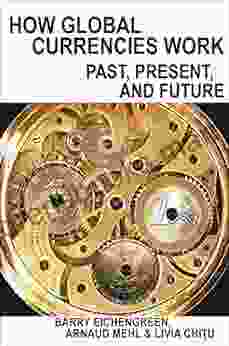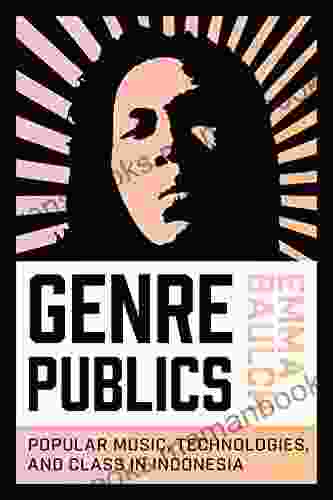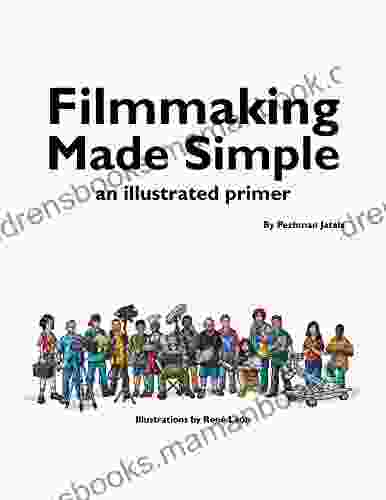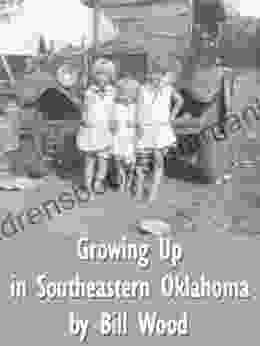Popular Music Technologies and Class in Indonesian Music Culture: An Ethnographic Study

5 out of 5
| Language | : | English |
| File size | : | 4419 KB |
| Text-to-Speech | : | Enabled |
| Screen Reader | : | Supported |
| Enhanced typesetting | : | Enabled |
| Print length | : | 232 pages |
| Paperback | : | 116 pages |
| Item Weight | : | 5.6 ounces |
| Dimensions | : | 5.83 x 0.28 x 8.27 inches |
Music has always been a powerful force in Indonesian society, shaping cultural identity, expressing social values, and providing a means of entertainment and communication. In recent decades, the advent of new music technologies has had a profound impact on Indonesian music culture, transforming the way music is created, performed, and consumed.
This article explores the role of popular music technologies in shaping class distinctions within Indonesian music culture. Drawing on ethnographic research conducted in Jakarta, the capital of Indonesia, I examine how the use of different technologies, such as traditional instruments, Western instruments, and digital audio workstations (DAWs),reflects and reinforces social hierarchies within the music industry and among musicians.
Traditional Instruments and the Politics of Authenticity
Traditional Indonesian music is characterized by the use of a variety of instruments, including the gamelan, angklung, and suling. These instruments are often associated with particular ethnic groups and regions, and they play an important role in traditional ceremonies and rituals. In recent years, there has been a growing interest in traditional Indonesian music among urban youth, who see it as a way to connect with their cultural heritage.
However, the revival of traditional music has also been accompanied by a politics of authenticity. Some musicians and scholars argue that traditional music should only be played on traditional instruments, and that the use of Western instruments or electronic technology is a betrayal of tradition. This view is often held by members of the upper class, who see traditional music as a symbol of Indonesian national identity and cultural purity.
In contrast, many young musicians from lower-class backgrounds are experimenting with new ways to incorporate traditional instruments into popular music. They often use traditional instruments alongside Western instruments and electronic effects, creating a hybrid sound that reflects their own diverse cultural experiences. This approach to traditional music has been criticized by some purists, but it has also gained a wide following among young people who are looking for new ways to express their Indonesian identity.
Western Instruments and the Global Music Market
Western instruments, such as the guitar, bass, and drums, are widely used in popular music around the world. In Indonesia, Western instruments were first introduced by European colonizers in the 19th century. They were initially used in military bands and in the music of the elite. However, in the mid-20th century, Western instruments began to be adopted by Indonesian popular musicians, who used them to create new genres of music, such as kroncong, dangdut, and rock.
Today, Western instruments are ubiquitous in Indonesian popular music. They are used by musicians from all social classes, and they can be found in a wide variety of musical genres. However, there is still a hierarchy of instruments within the Indonesian music industry. Guitars and drums are seen as the most prestigious instruments, and they are typically played by musicians from upper-class backgrounds. In contrast, bass guitars and keyboards are seen as less prestigious, and they are often played by musicians from lower-class backgrounds.
The hierarchy of instruments within the Indonesian music industry reflects the broader social hierarchy in Indonesian society. Upper-class musicians have access to better education and resources, and they are more likely to be able to afford to buy expensive instruments and equipment. They are also more likely to have connections to the music industry, which gives them access to opportunities to perform and record their music. In contrast, lower-class musicians often have to rely on cheaper instruments and equipment, and they may have less access to the music industry.
Digital Audio Workstations and the Democratization of Music Production
Digital audio workstations (DAWs) are software programs that allow musicians to record, edit, and mix music. DAWs have become increasingly popular in recent years, as they make it possible for musicians to create professional-quality recordings at home. This has led to a democratization of music production, as musicians from all social classes now have access to the same tools and technologies.
However, there is still a digital divide in the Indonesian music industry. Musicians from upper-class backgrounds are more likely to have access to the latest DAWs and plugins, while musicians from lower-class backgrounds may have to rely on older or pirated software. This can give upper-class musicians a competitive advantage in the music industry, as they are able to create more polished and professional-sounding recordings.
Despite the digital divide, DAWs have had a positive impact on the Indonesian music industry. They have made it possible for musicians from all social classes to create and share their music with the world. DAWs have also led to the emergence of new genres of music, such as electronic dance music (EDM) and hip-hop, which are often created by musicians from lower-class backgrounds.
Popular music technologies play a significant role in shaping class distinctions within Indonesian music culture. The use of different technologies, such as traditional instruments, Western instruments, and DAWs, reflects and reinforces social hierarchies within the music industry and among musicians. However, the democratization of music production through DAWs has also created new opportunities for musicians from all social classes to create and share their music with the world.
As new music technologies continue to emerge, it is likely that the class landscape of the Indonesian music industry will continue to change. However, one thing is for sure: music will continue to play a vital role in Indonesian society, providing a means of entertainment, communication, and cultural expression for people from all walks of life.
References
- Boellstorff, Tom. 2005. The Gay Archipelago: Sexuality and Nation in Indonesia. Princeton University Press.
- Feld, Steven. 1990. Sound and Sentiment: Birds, Weeping, Poetics, and Song in Kaluli Expression. University of Pennsylvania Press.
- Harsha, Debu. 2006. Rock and Roll in Indonesia: The Politics and Poetics of Identity. Equinox Publishing.
- Lindsay, Jennifer. 2008. Javanese Gamelan: Traditional Orchestra of Indonesia. Ashgate Publishing.
- Miller, Terry E. 2004. The Singer's Art in Indonesia: A Study in Traditional Vocal Music in West Java. Routledge.
5 out of 5
| Language | : | English |
| File size | : | 4419 KB |
| Text-to-Speech | : | Enabled |
| Screen Reader | : | Supported |
| Enhanced typesetting | : | Enabled |
| Print length | : | 232 pages |
| Paperback | : | 116 pages |
| Item Weight | : | 5.6 ounces |
| Dimensions | : | 5.83 x 0.28 x 8.27 inches |
Do you want to contribute by writing guest posts on this blog?
Please contact us and send us a resume of previous articles that you have written.
 Top Book
Top Book Novel
Novel Fiction
Fiction Nonfiction
Nonfiction Literature
Literature Paperback
Paperback Hardcover
Hardcover E-book
E-book Audiobook
Audiobook Bestseller
Bestseller Classic
Classic Mystery
Mystery Thriller
Thriller Romance
Romance Fantasy
Fantasy Science Fiction
Science Fiction Biography
Biography Memoir
Memoir Autobiography
Autobiography Poetry
Poetry Drama
Drama Historical Fiction
Historical Fiction Self-help
Self-help Young Adult
Young Adult Childrens Books
Childrens Books Graphic Novel
Graphic Novel Anthology
Anthology Series
Series Encyclopedia
Encyclopedia Reference
Reference Guidebook
Guidebook Textbook
Textbook Workbook
Workbook Journal
Journal Diary
Diary Manuscript
Manuscript Folio
Folio Pulp Fiction
Pulp Fiction Short Stories
Short Stories Fairy Tales
Fairy Tales Fables
Fables Mythology
Mythology Philosophy
Philosophy Religion
Religion Spirituality
Spirituality Essays
Essays Critique
Critique Commentary
Commentary Glossary
Glossary Bibliography
Bibliography Index
Index Table of Contents
Table of Contents Preface
Preface Introduction
Introduction Foreword
Foreword Afterword
Afterword Appendices
Appendices Annotations
Annotations Footnotes
Footnotes Epilogue
Epilogue Prologue
Prologue Jen Limarzi
Jen Limarzi Joanne Entwistle
Joanne Entwistle Mia Caldwell
Mia Caldwell Echo Huang
Echo Huang Thomas Meyer
Thomas Meyer Helene S Herbert
Helene S Herbert Zachary Scott Robbins
Zachary Scott Robbins Antonio Mira De Amescua
Antonio Mira De Amescua Thiruvalluvar
Thiruvalluvar Alison Collier
Alison Collier Alistair Maclean
Alistair Maclean Dan Willis
Dan Willis John Downey
John Downey Jessica Otterwell
Jessica Otterwell Susan Windle
Susan Windle Ellen Jovin
Ellen Jovin Hallie Ephron
Hallie Ephron Mark Pullicino
Mark Pullicino Arivan Srinivasan
Arivan Srinivasan Brian Doyle
Brian Doyle
Light bulbAdvertise smarter! Our strategic ad space ensures maximum exposure. Reserve your spot today!

 Yasunari KawabataThe Enduring Legacy of King Arthur and His Knights: A Timeless Tale of...
Yasunari KawabataThe Enduring Legacy of King Arthur and His Knights: A Timeless Tale of... Glen PowellFollow ·12.7k
Glen PowellFollow ·12.7k Duncan CoxFollow ·15.1k
Duncan CoxFollow ·15.1k José MartíFollow ·4.8k
José MartíFollow ·4.8k Emilio CoxFollow ·10.6k
Emilio CoxFollow ·10.6k Isaac AsimovFollow ·11.7k
Isaac AsimovFollow ·11.7k John ParkerFollow ·7.3k
John ParkerFollow ·7.3k Cody RussellFollow ·10.5k
Cody RussellFollow ·10.5k Art MitchellFollow ·17.7k
Art MitchellFollow ·17.7k

 Tom Clancy
Tom ClancyReading Wellness: Lessons in Independence and Proficiency
Reading is a fundamental skill that can...

 Brody Powell
Brody PowellHow Global Currencies Work: A Comprehensive Guide to...
Overview of...

 Dwight Bell
Dwight BellDune by Frank Herbert: An Epic Space Opera That Explores...
Dune by Frank...

 Ronald Simmons
Ronald SimmonsAn Anthology of Early Plays (1858-1938): A Journey into...
: Uncovering...

 Dominic Simmons
Dominic SimmonsCulture in the Ancient World: A Comprehensive Exploration...
Culture is a complex and multifaceted concept...
5 out of 5
| Language | : | English |
| File size | : | 4419 KB |
| Text-to-Speech | : | Enabled |
| Screen Reader | : | Supported |
| Enhanced typesetting | : | Enabled |
| Print length | : | 232 pages |
| Paperback | : | 116 pages |
| Item Weight | : | 5.6 ounces |
| Dimensions | : | 5.83 x 0.28 x 8.27 inches |











